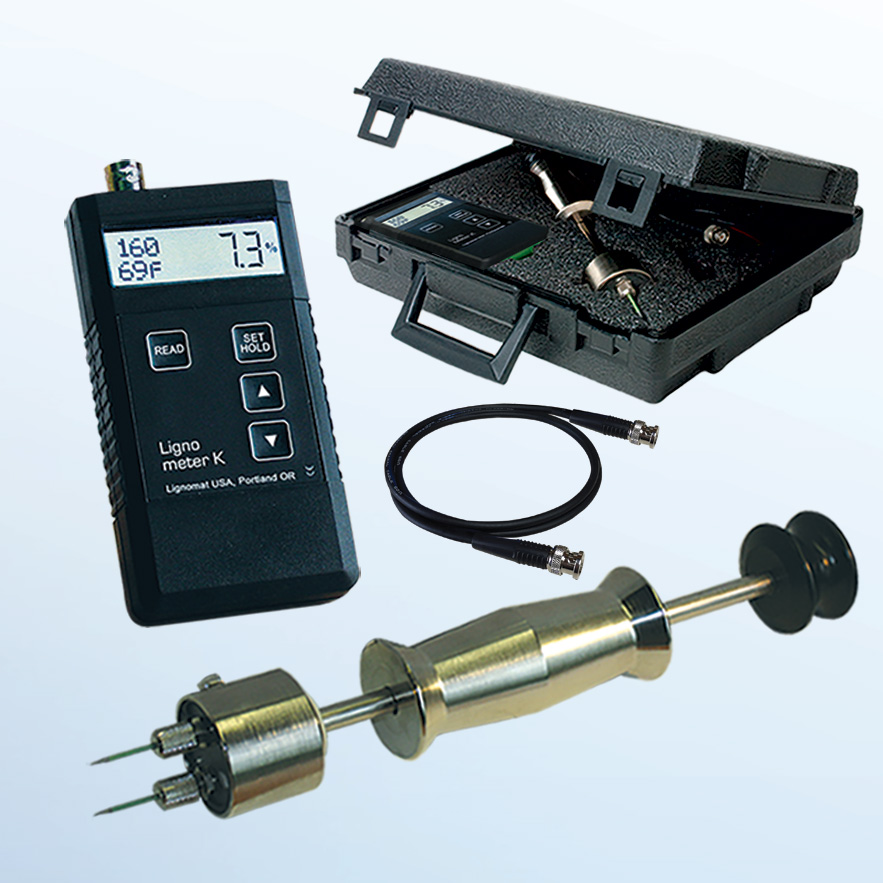Moisture Meter Purchasing Guide: What to Look for in High-Quality Instruments
Moisture Meter Purchasing Guide: What to Look for in High-Quality Instruments
Blog Article
Look Into the Globe of Moisture Meters: Whatever You Need to Know
In the realm of moisture meters exists a globe of accuracy and usefulness that commonly goes undetected. These gadgets, while apparently simple, hold a riches of details that can dramatically affect different industries and applications. Understanding exactly how moisture meters run, the various kinds available, and their diverse uses can shed light on their importance in making certain quality and efficiency. By discovering the intricacies of moisture meters, one can discover a valuable tool that goes beyond mere dimension, providing insights that can make a significant distinction in numerous fields.
Exactly How Moisture Meters Work
Moisture meters run by gauging the electric conductivity or capacitance of products to identify the dampness material present. These meters are very useful devices throughout different industries, including agriculture, woodworking, and construction. By making use of different methods such as pin-type or pinless technology, moisture meters give accurate analyses that assist specialists make educated decisions.
Pin-type moisture meters work by placing the sharp pins right into the product being evaluated. On the various other hand, pinless dampness meters make use of electro-magnetic signals to check a larger location without triggering any kind of damages to the product's surface.
Despite the technique made use of, wetness meters play an essential role in avoiding concerns such as mold development, structural damage, or product problems triggered by excess moisture. Recognizing exactly how these meters job is necessary for making sure the quality and stability of materials in numerous applications.
Kinds Of Moisture Meters
Given the important function dampness meters play in various sectors, it is important to recognize the various kinds offered to specialists for accurately assessing dampness degrees - Moisture Meter. There are primarily 2 main kinds of moisture meters: pin-type and pinless dampness meters

On the other hand, pinless moisture meters utilize electro-magnetic sensor plates to scan a bigger area of the material without causing any damage. This type appropriates for swiftly scanning large areas and is commonly made use of for floor covering, wall surfaces, and ceilings. Pinless meters are hassle-free for taking analyses on finished surface areas without leaving any noticeable marks.
Both sorts of dampness meters have their advantages and are chosen based on the particular requirements of the job available. Comprehending the distinctions in between these kinds is important for specialists to make precise wetness evaluations.
Applications Across Industries
Building and construction experts rely on moisture meters to analyze the dampness levels in structure products like drywall, timber, and concrete, which is important for keeping structural honesty that site and preventing concerns like rot or mold and mildew. The flooring market uses dampness meters to determine the dampness material in subfloors prior to installing numerous flooring coverings, stopping pricey damages due to excess moisture. In the food industry, moisture meters are utilized to monitor and control moisture levels in products such as grains, nuts, and dried fruits to maintain quality and quality.
Tips for Making Use Of Dampness Meters
Use the wetness meter's calibration setups to make certain exact analyses when measuring the dampness content in different materials. In addition, make sure the meter is established to the right moisture array for the material you are gauging to get the most precise outcomes.
When making use of a pin-type moisture meter, put the pins to the appropriate depth recommended for the product being tested. This guarantees that the moisture analyses are extracted from the right depth within the material, supplying a much more exact representation of its dampness web content. For pinless wetness meters, remember to maintain appropriate call with the product's surface area to obtain dependable analyses.
Frequently inspect and change the batteries in your wetness meter to avoid imprecise readings due to reduced power. Store the meter in a dry and secure area when not being used to lengthen its life-span and maintain its precision. By adhering to these suggestions, you can optimize the efficiency of your dampness meter and get precise wetness web content measurements throughout various materials.
Maintenance and Calibration
To make certain the precision of dampness material dimensions, normal upkeep and calibration of the dampness meter are why not find out more important actions in its correct functioning. Calibration changes the moisture meter to make sure that it gives reliable and regular results.
Calibration needs to be performed regularly, specifically if the moisture meter is made use of frequently or in essential applications where specific measurements are required. By adjusting the wetness description and keeping meter routinely, individuals can rely on the precision of the dampness content measurements obtained.
Verdict

To conclude, moisture meters play a vital role in various sectors by precisely gauging the wetness web content of products. Comprehending exactly how these tools work, the various types offered, and correct upkeep and calibration are vital for getting reputable results. Whether in building, farming, or production, making use of moisture meters aids make sure quality control and efficiency in processes.

In verdict, wetness meters play a vital duty in various markets by accurately measuring the moisture web content of materials.
Report this page